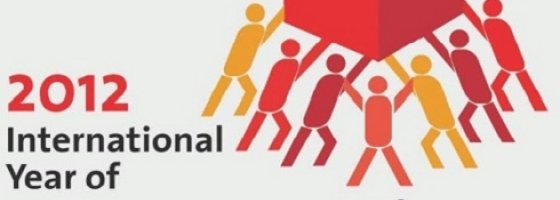Blog post
International Year of Cooperatives
The International Year of Cooperatives is nearing its end. The calendar, once filled with congresses and seminars on this theme, is almost empty. You probably didn’t hear much about it from LEI Wageningen UR. Strangely enough, that is because we’ve been pretty busy with it ourselves. In the past two years we have been collaborating with an international consortium on a large-scale project for the European Commission on the future of cooperatives. The results will belong to our client, who will most likely publish them at the end of this year. Visitors to the Cooperative Day of the Nationale Coöperatieve Raad (‘national cooperative board’) on 22 November will get a foretaste of the results.

Initially, I was somewhat sceptical about another ‘Year of…’. World Food Day, Heart Week, World Book Day – all worthy causes and it’s good to be reminded of them, but shouldn’t they be getting attention the other 364 days or 51 weeks of the year as well? That, of course, is the whole point of a ‘day’ or ‘week’ in the first place. Some are also a bit too commercial for my liking, like Valentine’s Day, Mother’s Day and World Animal Day.
But it has to be said, the Year of Cooperatives was a very successful move on the part of the UN. Ironically, it couldn’t have come at a better time: during an economic crisis, which is making us look for new organisational structures alongside speculative banks and shrinking multinationals.
Our project took me to numerous seminars and congresses in Europe, where the theme was the future of cooperatives. Many people gained a clearer idea of what cooperatives are, where and when they offer added value, and where there is scope for improvement.
One particularly striking revelation was that the dividing line between cooperatives and other types of business is not all that clear-cut. First of all, large cooperatives are often organised along similar lines to listed companies, with the cooperative association separate from the company. This is in order to speed up business deals in the market and because most top executives want some degree of autonomy anyway. In situations like this, however, it is debatable whether they are given enough counterweight by the cooperative association’s board members.
Secondly, several enterprises are still owned by farmers, perhaps via an agricultural organisation, but they are not cooperatives according to our definition. A classic example in the Netherlands is Vion. A cooperative is an organisation that is owned and controlled by the users (of the service or product), who also reap the profits. This does not apply to the businesses that supply Vion with pigs.
There is, in any case, no cut-and-dried academic definition of a cooperative because there is no certainty about the required levels of ownership and management. In other countries there are various cooperatives which are part-owned by a bank, perhaps even a cooperative bank, or which in part have a stock exchange listing.The International Year of Cooperatives has focused attention and generated new insights. But it will soon be over, to be succeeded in 2014 by the International Year of Family Farming. ‘Small is beautiful’ is the first association that springs to mind, but, in effect, most family-run agricultural and horticultural businesses are growing into normal small and medium-sized enterprises. And the whole point of cooperatives is to redress the scale disadvantages of smaller family businesses.